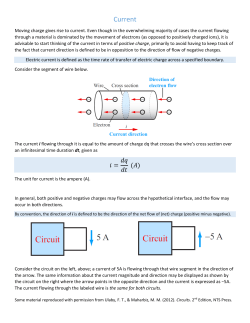
Homework 2: Universal Gates & Flip Flops
Homework 2: Universal Gates & Flip Flops CS 200 • 10 Points Total Due Wednesday, February 4, 2015 Assignment Answer each of the following questions based on Chapter 3 of the Null textbook. 1. Which gates are called "universal" gates? Why? (2 pts) NAND and NOR gates. Any circuit consisting of combinations of AND, OR, and/or NOT gates can be built with only NAND gate or only NOR gates. 2. Draw two sets of logic circuits for AND, OR, and NOT using each of the universal gates from question 1. In other words, draw an AND circuit using only the one kind of gate and then draw it again using only the other kind of gate. (3 pts) AND OR NOT 3. What's the difference between combinational logic and sequential logic? (2 pts) Simply, when inputs are applied to a combinational logic circuit, the outputs are immediately available. A sequential circuit only presents the outputs when triggered and the outputs remain constant until the next trigger. In addition, sequential circuits depend on their prior state as an input in producing their new state; this is called ‘feedback’. 4. What ARE flip-flops? (2 pts) Flip-flops are sequential circuits that have two stable states. They usually only have one output (or one and its corresponding complement) and are also often edgetriggered, but it’s the number of states that determines if a sequential circuit is a flipflop or not. Also, it is incorrect to say that flip-flops are memory elements for sequential circuits. Not all sequential circuits contain flip-flops as a sub-element. 5. Make a table showing all the state transitions for a J-K flip-flop. (1 pt) J 0 0 0 0 1 1 1 1 K 0 0 1 1 0 0 1 1 Present State Q(t) 0 1 0 1 0 1 0 1 Next State Q(t+1) 0 1 0 0 1 1 1 0
© Copyright 2025





















